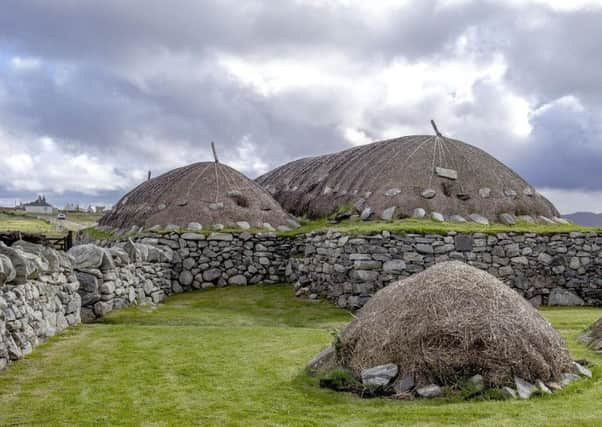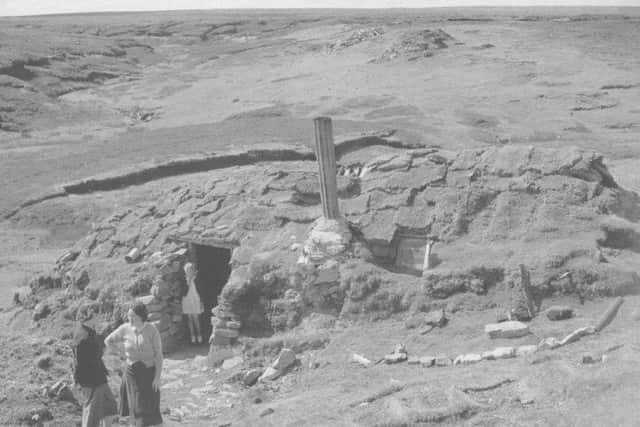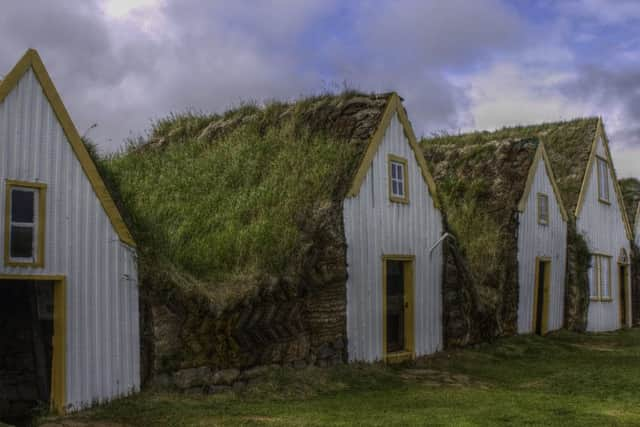Scotland's turf houses that disappeared from the landscape


Now, work is on going to understand the skills and techniques used to build these homes in order to apply these ancient approaches to house construction once again.
Architect Tom Morton, of Arc architects, Cupar, recently hosted a conference in Stirling on turf houses and their place both in Scotland’s past and the future of sustainable low-impact housing.
Advertisement
Hide AdTurf as a building material is enjoying revived interest in Scotland given its ability to waterproof and insulate properties as well as sustain a more environmentally friendly approach to house building which heavily relies on imports and carbon heavy manufacturing processes.


First recorded in Scotland around 4,000 BC, only traces of the properties remain after they were abandoned through migration, clearances and changing uses of land.
Mr Morton said: “Once the buildings are abandoned they melt back into the landscape. We have lost so many traditional buildings in Scotland. Turf was a very important building material, but the houses have all but disappeared.
“Right from pre-history, around 4,000BC, people were starting to build houses in Scotland from turf. This went on right up to the 19th century.
“There is a lot of work being done to understand what these buildings were like and the proper ways of repairing them. We have been looking to different countries for help with this, such as Iceland, where turf was used from around 1,000BC to the 1980s.”


Evidence of turf buildings can be found across Scotland, from the Dun Nosebridge Iron Age fort on Islay to the remnants of Roman forts along the Antonine Wall, to the Leanoch Cottage at Culloden Moor and the long empty homes of St Kilda.
Advertisement
Hide AdTypically, turf blocks were cut from the ground to construct walls, with the material also used to insulate roofs or act as a type of mortar.
Through time, the material was deployed where treeless landscapes offered up no timber. Blackhouses of the Hebrides used turf to insulate the roof, similar to the Sammi houses of West Finnmark and those found in the Faroe Isles, Viking-era Greenland, Newfoundland and Iceland.
Advertisement
Hide AdIn 1951, a byre was built from turf at Shader on the Isle of Lewis given the lack of other building materials after the Second World War.
Turf was typically dug to build a house just yards from where it would eventually stand. Construction sometimes raised tensions with landlords who complained about a loss of grazing, Mr Morton said.
According to Historic Environment Scotland, drystone was often used to coat the interior turf wall to stop animals damaging the surface, whether by rubbing or licking for salt.
However, drystone was later used on the outside to meet growing regulations from landowners, who could then claim their tenants were housed in ‘stone-built homes’.
Rules for tenants on Lewis Estate in 1879 insisted ‘the dwelling houses to be erected by the tenants ... shall be of stone and lime, or stone and clay, pinned and hurled with lime, or with stone on the outer face and turf and sod on the inside’.
However, according to HES, putting drystone on the exterior of the turf house held water, softened the surface and created erosion.
Advertisement
Hide AdMr Morton added: “The turf houses became associated with poverty during the 18th and 19th Century and were replaced following industrialisation, usually with stone buildings, which are much colder. We are coming full circle really as people are now realising the benefits of using more natural materials in their homes.”